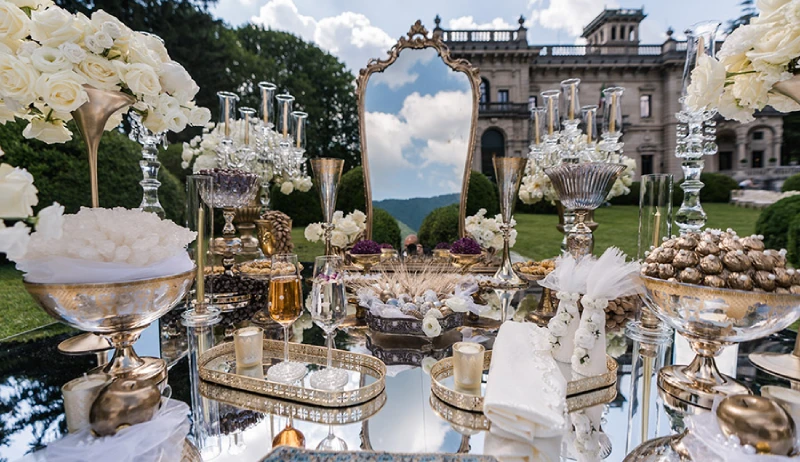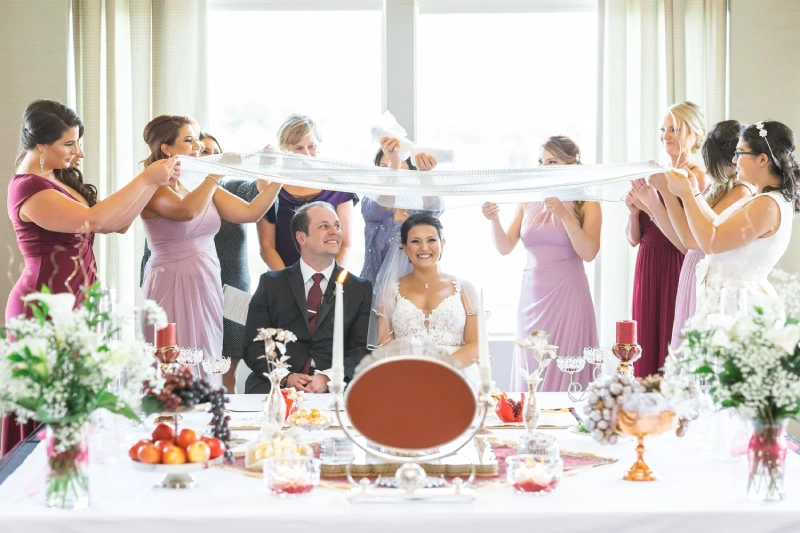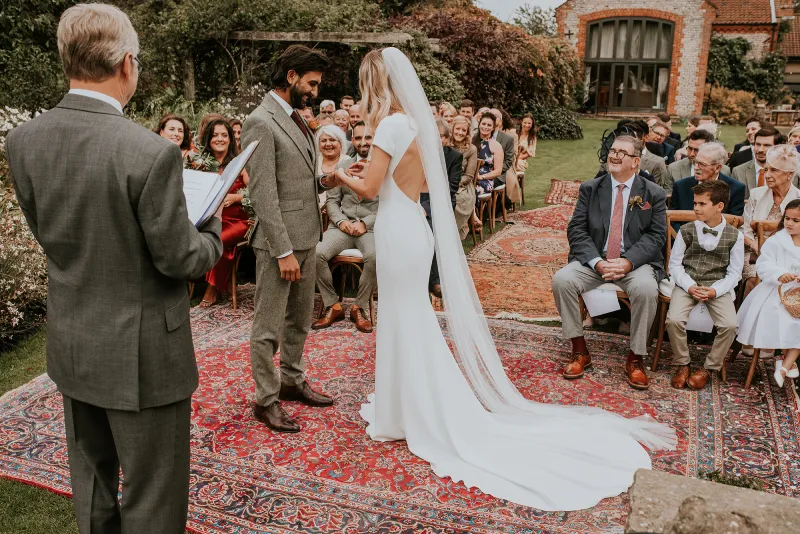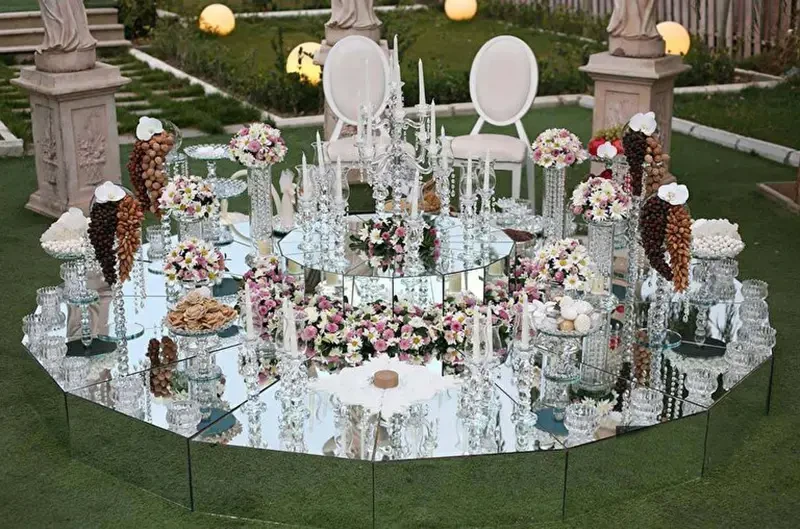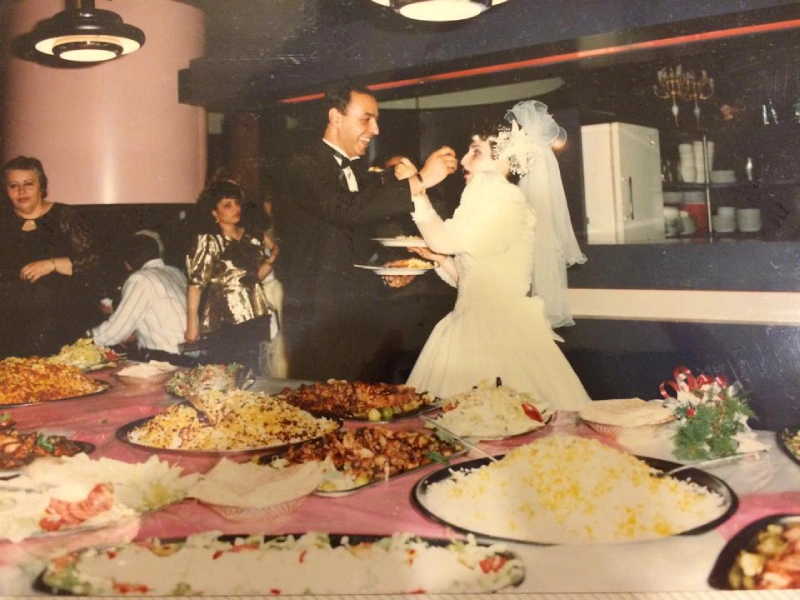Imagine a celebration bursting with color, elegance, and deeply rooted traditions. A Persian wedding is not just an event; it’s a beautifully choreographed journey that reflects the rich culture and timeless customs of Iran. From the intimate Aghd ceremony, where vows are exchanged under the gaze of cherished family members, to the vibrant reception filled with music and dancing, every moment is crafted to honor love and heritage.
In this comprehensive guide, we’ll walk you through the quintessential Persian wedding timeline, outlining each step—from preparation to post-wedding festivities. Whether you’re a couple planning your big day or simply intrigued by this magnificent celebration, our step-by-step breakdown will illuminate the significance of each tradition, ensuring you grasp the essence of this enchanting occasion. Get ready to delve into a world where love stories intertwine with cultural traditions like never before!
Understanding the Aghd Ceremony
The Aghd ceremony is the heart of a Persian wedding, a sacred moment where the couple officially becomes husband and wife. This ceremony is steeped in tradition and typically takes place in the presence of close family members and friends. The Aghd is often held at the bride’s home or a specially decorated venue, creating an intimate and spiritual atmosphere. The importance of the Aghd cannot be overstated, as it establishes the legal and spiritual union of the couple in the eyes of both their families and their community.
The Aghd ceremony is conducted by a clergy member or a respected elder who recites specific verses and prayers. These recitations are often derived from religious texts and carry profound meaning, symbolizing the couple’s commitment to each other and to their faith. During the ceremony, the bride and groom exchange vows and consent to the marriage, traditionally asked three times to ensure both parties’ affirmative responses. This triple affirmation is a hallmark of the ceremony, emphasizing the gravity and sincerity of their union.
Integral to the Aghd is the presentation of the marriage contract, known as the “Aghd-Namah.” This document outlines the rights and responsibilities of both partners, serving as a formal agreement that binds them together. The Aghd-Namah is often beautifully decorated, reflecting the significance of the occasion. The signing of this contract is a momentous event, marking the couple’s official commitment to one another. Following this, the ceremony concludes with blessings and well-wishes from family members, encapsulating the couple in a circle of love and support.
Pre-Wedding Rituals and Preparations
Before the Aghd ceremony, a series of pre-wedding rituals and preparations set the stage for the big day. These activities are deeply rooted in Persian culture and are essential in ensuring that the wedding is not only a celebration of love but also a reflection of tradition and heritage. One of the most anticipated pre-wedding events is the “Hana Bandan,” a festive gathering where henna is applied to the bride’s hands and feet. This ritual is not only a beautification process but also a symbol of joy and good fortune for the couple.
Another significant pre-wedding ritual is the “Bale Boroon,” which is a formal engagement ceremony. During this event, the families of the bride and groom come together to discuss and agree upon the terms of the marriage. Gifts are exchanged, and the couple is blessed by their elders, signifying the union of two families. The Bale Boroon is an opportunity for both families to bond and celebrate the upcoming nuptials, often accompanied by traditional music, dancing, and a lavish spread of food.
In addition to these ceremonies, the bride and groom, along with their families, engage in meticulous preparations for the wedding day. This includes selecting the wedding attire, often traditional Persian garments that are rich in color and embellishments. The bride’s dress, in particular, is chosen with great care, symbolizing purity and elegance. The families also prepare the “Sofreh Aghd,” a beautifully arranged spread that plays a central role in the Aghd ceremony. This spread is laden with symbolic items, each representing different aspects of life and marriage.
The Role of the Wedding Planner
Given the complexity and the multitude of traditions involved in a Persian wedding, the role of a wedding planner is crucial. A seasoned planner not only ensures that all elements of the wedding are seamlessly coordinated but also helps in preserving and honoring cultural traditions. Their expertise in managing the logistics, from the guest list to the venue decorations, allows the couple and their families to focus on enjoying the celebration without the stress of planning.
A wedding planner begins by understanding the couple’s vision for their big day. This involves in-depth discussions about their preferences, family traditions, and any specific cultural rituals they wish to incorporate. The planner then creates a detailed timeline, ensuring that each event, from the pre-wedding rituals to the reception, is meticulously organized. This timeline serves as a roadmap, guiding the couple through the various stages of their wedding journey.
In addition to logistics, the wedding planner plays a pivotal role in curating the aesthetic of the wedding. This includes coordinating with florists, decorators, and caterers to create a cohesive and visually stunning celebration. From the intricate design of the Sofreh Aghd to the grand decor of the reception venue, the planner’s touch ensures that every detail is perfect. Their experience and knowledge of Persian wedding customs are invaluable in creating a memorable and culturally rich experience for the couple and their guests.
Key Elements of the Aghd Ceremony
The Aghd ceremony is a tapestry of symbolic elements, each carefully chosen to represent different facets of life and marriage. Central to this ceremony is the Sofreh Aghd, a lavishly decorated spread that holds various items, each with its own significance. One of the most prominent items is the mirror, symbolizing brightness and clarity in the couple’s future. Candles placed on either side of the mirror represent light and energy, illuminating the path of the newlyweds.
Another essential component of the Sofreh Aghd is the “Esfand,” a small brazier with burning wild rue seeds. The smoke from the seeds is believed to ward off evil spirits and protect the couple from harm. Additionally, a cup of honey is placed on the spread, symbolizing sweetness and harmony in the couple’s life together. During the ceremony, the bride and groom dip their fingers in the honey and feed it to each other, signifying their promise to bring sweetness into each other’s lives.
The ceremony also includes the recitation of verses from the Quran or other religious texts, depending on the couple’s faith. These verses are chosen to bless the union and offer guidance for a prosperous and harmonious marriage. The presence of family members and close friends, who often read these verses or offer blessings, adds a deeply personal touch to the ceremony. The combination of these elements creates a profound and meaningful experience, intertwining spiritual blessings with cultural traditions.
The Significance of the Sofreh Aghd
The Sofreh Aghd is more than just a decorative spread; it is a symbolic representation of the couple’s journey through life. Each item on the Sofreh Aghd holds a special meaning, contributing to the overall essence of the ceremony. The spread typically includes a mirror, candles, herbs, fruits, sweets, and other symbolic items. The mirror and candles, as mentioned earlier, symbolize light and clarity, guiding the couple towards a bright future.
Herbs such as “Sabzeh” (sprouted wheat) and “Nun” (bread) are placed on the Sofreh to represent prosperity and abundance. Fruits, particularly pomegranates and apples, symbolize fertility and the hope for a fruitful marriage. Nuts and sweets, including sugar cones, signify sweetness and joy in the couple’s life together. These items are carefully arranged on the Sofreh, creating a visual and symbolic representation of the couple’s hopes and dreams.
The Sofreh Aghd is also adorned with decorative items such as gold coins, which symbolize wealth and financial stability. A specially baked flatbread known as “Nān-e Sangak” is also placed on the spread, representing the couple’s sustenance and provision. Additionally, a copy of the Quran or other religious text is included, symbolizing the spiritual foundation of the marriage. The meticulous arrangement of these items reflects the couple’s respect for tradition and their desire to start their married life with blessings and positive energy.
Transitioning from Aghd to Reception
Once the Aghd ceremony concludes, the celebration transitions from the intimate and spiritual to the lively and festive. The shift from the Aghd to the reception is marked by a change in atmosphere, where the couple and their guests move from solemn vows to joyous festivities. This transition is often accompanied by music and dancing, signaling the start of the reception. The couple is usually greeted with cheers and applause as they enter the reception venue, marking the beginning of the celebration.
One of the highlights of this transition is the “Cake and Knife Dance,” a playful tradition where the bride and groom attempt to cut the wedding cake while friends and family make it a bit challenging by playfully taking the knife away. This dance is accompanied by lively music and laughter, setting the tone for the rest of the evening. It is a joyous moment that brings everyone together, celebrating the couple’s union in a fun and lighthearted manner.
The reception itself is a grand affair, often held in a beautifully decorated venue with an elaborate spread of food and drinks. Traditional Persian music fills the air, and guests take to the dance floor to celebrate the newlyweds. The reception is a time for the couple to let loose and enjoy the company of their loved ones, creating memories that will last a lifetime. The transition from the Aghd to the reception embodies the perfect blend of tradition and modern celebration, ensuring that every aspect of the wedding is honored and enjoyed.
Traditional Persian Wedding Reception Activities
The Persian wedding reception is a vibrant and dynamic celebration filled with traditional activities that bring joy and excitement to the evening. One of the most anticipated activities is the “Raghseh Chagoo,” or the Knife Dance. This dance involves the bride and groom taking turns attempting to cut the wedding cake while guests, particularly female relatives, perform intricate dance moves and pass the knife around. The dance is accompanied by energetic music, creating a lively and festive atmosphere.
Another popular activity during the reception is the “Raghseh Band,” or the Bandari dance. This traditional Persian dance is characterized by rhythmic movements and is often performed in a circle, with guests joining in to celebrate the couple. The Bandari dance is a symbol of unity and joy, bringing everyone together on the dance floor. It is a moment of pure celebration, where the couple and their guests can immerse themselves in the music and dance.
The reception also includes a lavish feast, featuring an array of traditional Persian dishes. From “Chelo Kebab” to “Fesenjan,” the menu is a culinary journey through Persian cuisine. The food is not only delicious but also symbolic, with each dish representing different aspects of life and prosperity. The feast is a time for guests to enjoy the flavors of Persian culture, sharing a meal that reflects the richness of the couple’s heritage. The combination of music, dance, and food creates a memorable and joyous celebration that honors the couple’s love and cultural traditions.
Popular Persian Wedding Customs and Traditions
Persian weddings are rich in customs and traditions that add depth and meaning to the celebration. One such tradition is the “Shab-e Aroosi,” or the wedding night, which is celebrated with great enthusiasm. This event typically takes place a day or two before the wedding and involves a series of rituals and festivities. The bride and groom, along with their families, gather for a night of music, dancing, and merriment, marking the final moments of their single lives.
Another cherished tradition is the “Arous Goli,” or the bride’s shower of flowers. During this custom, the bride is showered with flower petals by her family and friends as she prepares for the Aghd ceremony. This act symbolizes blessings and well-wishes for the bride’s new journey. The petals, often fragrant and colorful, create a beautiful and emotional moment that captures the essence of love and support from the bride’s loved ones.
The “Payeh Bazi,” or the playful footwork, is another delightful custom often seen at Persian weddings. This tradition involves the groom’s family playfully negotiating with the bride’s family to ‘steal’ the bride’s shoe. The groom’s family then hides the shoe, and the bride’s family must search for it, often leading to humorous exchanges and laughter. The Payeh Bazi is a lighthearted tradition that adds an element of fun and camaraderie to the wedding festivities.
Conclusion: Celebrating Love in Persian Culture
A Persian wedding is a magnificent celebration that beautifully intertwines love and cultural heritage. From the sacred Aghd ceremony to the vibrant reception, every moment is meticulously crafted to honor tradition and celebrate the union of two souls. The journey through a Persian wedding is not just about the couple’s commitment to each other but also a reflection of their respect for their heritage and the blessings of their families.
The rich tapestry of customs and traditions, from the Sofreh Aghd to the dancing and feasting, creates a celebration that is both meaningful and joyous. Each element of the wedding carries a symbolic significance, adding depth and beauty to the occasion. The involvement of family and friends, the heartfelt rituals, and the exuberant festivities all come together to create an unforgettable experience.
In celebrating a Persian wedding, one not only witnesses the love story of the couple but also partakes in a cultural journey that spans centuries. It is a celebration that captures the essence of Persian culture, blending the old with the new, and creating a timeless tribute to love and tradition. Whether you are planning your own Persian wedding or simply fascinated by this rich cultural celebration, understanding the timeline and significance of each tradition allows you to fully appreciate the beauty and depth of this enchanting occasion.

